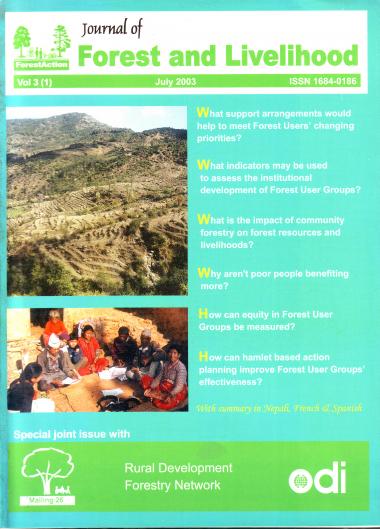Economics, Poverty and Transparency: Measuring Equity in Forest user Groups
DOI:
https://doi.org/10.3126/jfl.v3i1.59738Keywords:
Economics, poverty, Economics, Poverty and Transparency, Measuring Equity in Forest user Groups, forest user groupsAbstract
This study aimed to develop an economic methodology, usable by Forest User Groups (FUGs), for increasing equity transparency in community forestry in Nepal. Difficulties in developing a truly participatory approach led to a switch from the use of small key informant groups to the use of a household survey. Although more replicable, cost-effective and reliable for economic data, this reduced FUG ownership and empowerment. A main indicator for inequity was labor collection time: the return per labor day rose with the wealth group, reflecting shorter distances to collect forest products and more on-farm tree resources among the wealthier households. It is suggested that a suitable equity indicator to act as a proxy for the more complex economic indicators, and which could be more easily collected in a participatory way, is the time needed (average hours per day) to collect a bundle of subsistence forest products per unit of household demand (a composite of livestock ownership and household size). A gender-based equity indicator would be the number of female hours per day. Livestock ownership and household size should be a sufficient proxy for use levels.
Downloads
Downloads
Published
How to Cite
Issue
Section
License

This work is licensed under a Creative Commons Attribution-NonCommercial 4.0 International License.
CC-BY-NC: This license allows reusers to distribute, remix, adapt, and build upon the material in any medium or format for noncommercial purposes only, and only so long as attribution is given to the creator.





